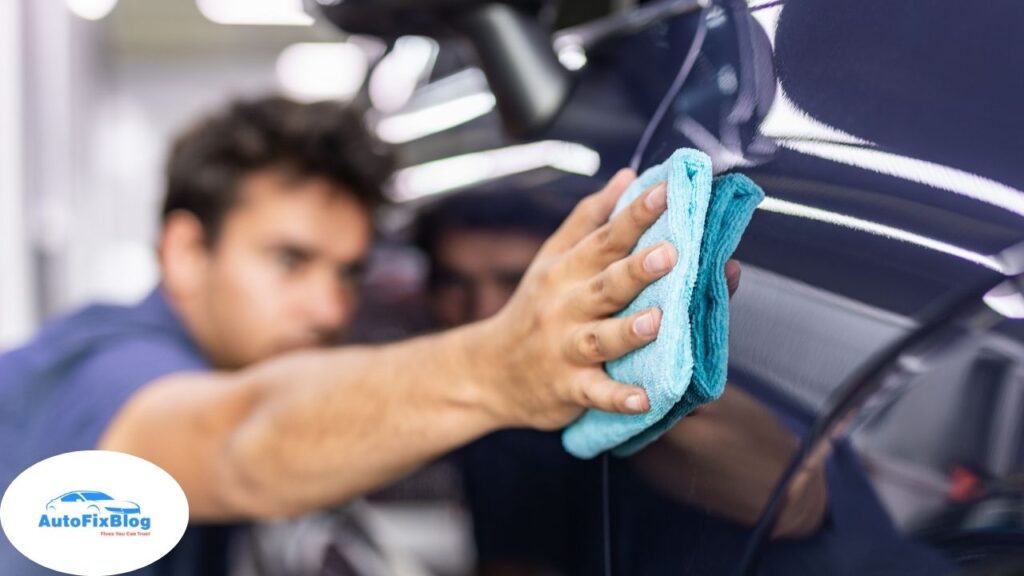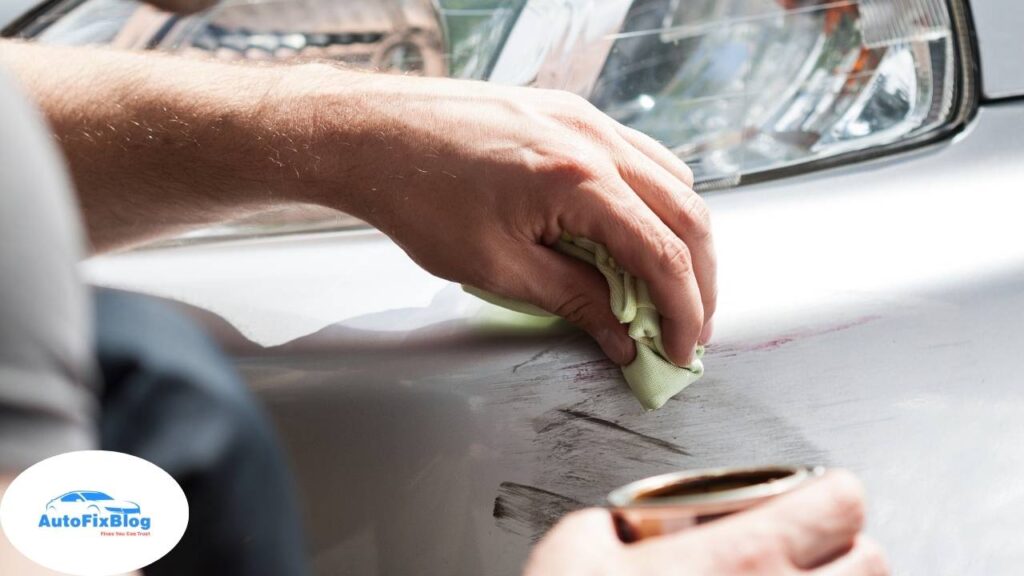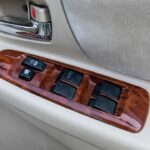When dealing with adhesive residue on your car’s paint, it’s important to remove it carefully to avoid damaging the paintwork. Whether it’s leftover glue from decals, stickers, or tape, knowing how to remove adhesive from car paint properly will help you keep your vehicle looking pristine.
Adhesive removal requires patience and the right materials to ensure that you get the job done without scratching or dulling your car’s surface.
In this article, we will discuss effective methods on how to remove adhesive from car paint, explain the tools you’ll need, and provide tips to prevent any harm to your car’s finish. We’ll also touch on related auto issues, such as water spots and paint blisters, to help you maintain the best appearance for your vehicle.
Why Adhesive Sticks to Car Paint
Adhesives can cling to car paint for a variety of reasons. Whether you applied a sticker to support a cause, showcase a brand, or add a personal touch, removing that sticker later on often leaves behind sticky residue. Adhesive gets embedded in the clear coat of the paint, making it tricky to remove without scratching or dulling the surface.
Moreover, if adhesives are left on for too long or exposed to heat and sunlight, they can become even more difficult to remove. The sun can cause adhesives to harden and chemically bond with the clear coat, making them even stickier and stubborn.

How to Remove Adhesive from Car Paint
Removing adhesive from car paint takes more than just elbow grease. There are specific techniques and products that work best for this task. Here are five proven methods on how to remove adhesive from car paint without causing damage.
1. Use Soapy Water and a Microfiber Cloth
The first and simplest method to try is cleaning the adhesive with soapy water and a microfiber cloth. This method works best for fresh or soft adhesives that haven’t yet hardened on the paint.
How to do it:
Mix warm water with a few drops of car-safe soap in a bucket.
- Dampen a microfiber cloth with the soapy solution.
- Gently rub the adhesive in a circular motion, applying moderate pressure.
- Continue rubbing until the adhesive starts to loosen.
This method is safe for your car’s paint and can often be enough to remove lighter adhesive residues. However, for more stubborn glue, you may need stronger methods.
2. Try a Commercial Adhesive Remover
If soapy water doesn’t do the trick, a commercial adhesive remover designed specifically for automotive use is your next best option. These products are formulated to break down sticky substances like glue, tar, and sap without damaging your paint.
How to use adhesive remover:
- Read the instructions on the product carefully to ensure it’s safe for use on car paint.
- Apply a small amount of adhesive remover to a clean microfiber cloth.
- Gently rub the affected area, working the remover into the adhesive residue.
- Allow the remover to sit for a minute or two, loosening the adhesive.
- Wipe away the loosened adhesive with a clean part of the cloth.
It’s important to follow up with a thorough wash of the area to remove any leftover product. Some adhesive removers can leave behind a residue that might attract dust and dirt if not cleaned properly.
3. Use Rubbing Alcohol or Isopropyl Alcohol
Rubbing alcohol (or isopropyl alcohol) is another safe and effective method for removing adhesive from car paint. Alcohol works by breaking down the glue’s chemical bonds, allowing you to wipe it off easily without affecting the paint.
How to use alcohol:
- Pour a small amount of rubbing alcohol onto a microfiber cloth.
- Gently rub the adhesive residue, allowing the alcohol to dissolve the sticky material.
- Continue rubbing until the adhesive is gone, adding more alcohol if needed.
- Once the area is clean, wipe it down with a damp cloth to remove any leftover alcohol.
This method is particularly useful for removing adhesive from sensitive areas, such as around windows or on badges, where the paint might be harder to work with.
4. Try Using Heat
Heat is another effective way to remove adhesive from car paint. By softening the glue, you can make it easier to peel or rub off without risking scratches.
How to use heat:
- Use a hairdryer or heat gun to apply heat to the adhesive. Keep the tool moving to avoid overheating one spot, which could damage the paint.
- As the adhesive softens, use a plastic scraper or credit card to gently lift the glue off the surface.
- Once you’ve removed most of the adhesive, clean the area with a microfiber cloth and soapy water to remove any residue.
Be cautious not to apply too much heat to one area, as this could lead to paint blisters, where the paint lifts away from the body of the car. Blisters are an issue caused by moisture or excessive heat, and they can ruin your car’s finish if not addressed properly.
5. Use WD-40
WD-40 is a versatile product known for removing a variety of substances, including adhesive residue. While not specifically designed for car paint, it is often safe to use as long as you clean the area afterward.
How to use WD-40:
- Spray a small amount of WD-40 onto the adhesive residue.
- Let it sit for a few minutes to allow the product to penetrate and loosen the adhesive.
- Use a microfiber cloth to gently rub the area, wiping away the adhesive as it loosens.
- Wash the area with soapy water to remove any remaining WD-40, as the oil in the product can attract dirt.
Preventing Adhesive Damage to Car Paint
Once you’ve successfully removed the adhesive, it’s important to protect your car’s paint from further damage. Here are a few tips for keeping your paint job looking flawless:
- Use a sealant or wax: After removing adhesive from the paint, applying a layer of wax or paint sealant can help protect the area. This will create a barrier between the paint and any future contaminants, making it easier to remove adhesives and other sticky substances.
- Avoid harsh chemicals: While it’s tempting to use household cleaners or abrasive materials, these can damage your car’s paint. Always use products specifically designed for automotive use.
- Remove adhesive as soon as possible: The longer adhesive stays on your car’s paint, the harder it will be to remove. Over time, adhesives can harden, bond with the paint, and become more difficult to clean.
Water Spots and Paint Blisters
While dealing with adhesive, it’s common to come across other auto issues, such as water spots and paint blisters. These problems can affect your car’s appearance, so it’s important to address them promptly.
Water spots are often caused by mineral deposits from rain or washing your car with hard water. These spots can etch into the paint if left untreated. To prevent water spots, dry your car thoroughly after washing, and consider using distilled water for the final rinse.
Paint blisters can occur if there is trapped moisture beneath the paint or excessive exposure to heat. If you notice paint blisters on your car, it’s crucial to fix them as soon as possible to prevent further damage. Professional attention may be required to sand down and repaint the affected areas.
Learning how to remove adhesive from car paint is essential for maintaining a clean, polished vehicle exterior. Whether you’re dealing with sticker residue, leftover tape, or other sticky substances, using the right method will help you protect your car’s finish.
From soapy water and rubbing alcohol to commercial adhesive removers and heat, there are multiple ways to get rid of adhesive without causing damage.
By following these steps, you can avoid unsightly adhesive residue and keep your car looking its best. Don’t forget to address related auto issues, such as water spots and paint blisters, to ensure that your vehicle’s paint stays in top condition. Proper care and maintenance will not only improve your car’s appearance but also protect its value over time.



